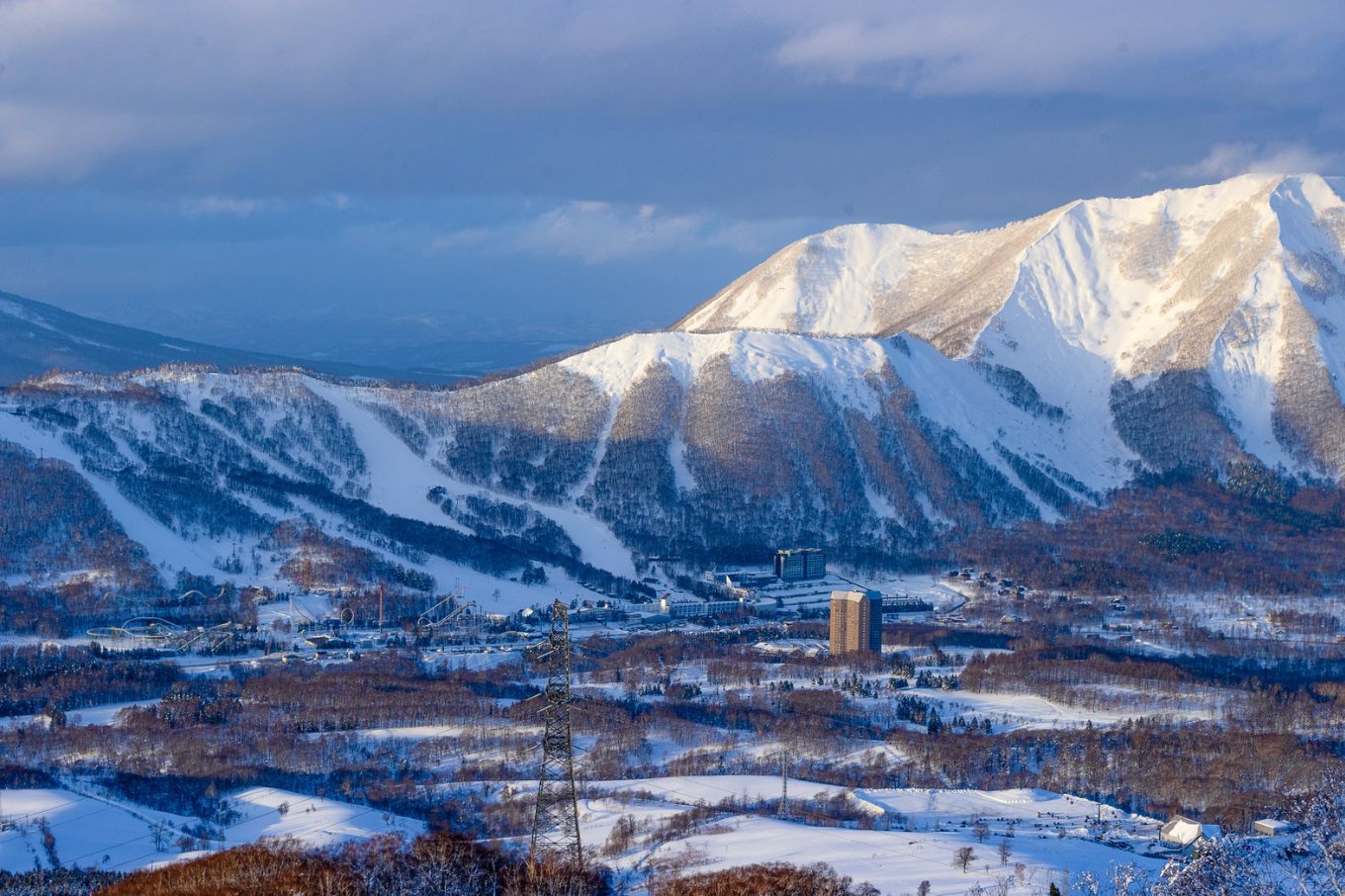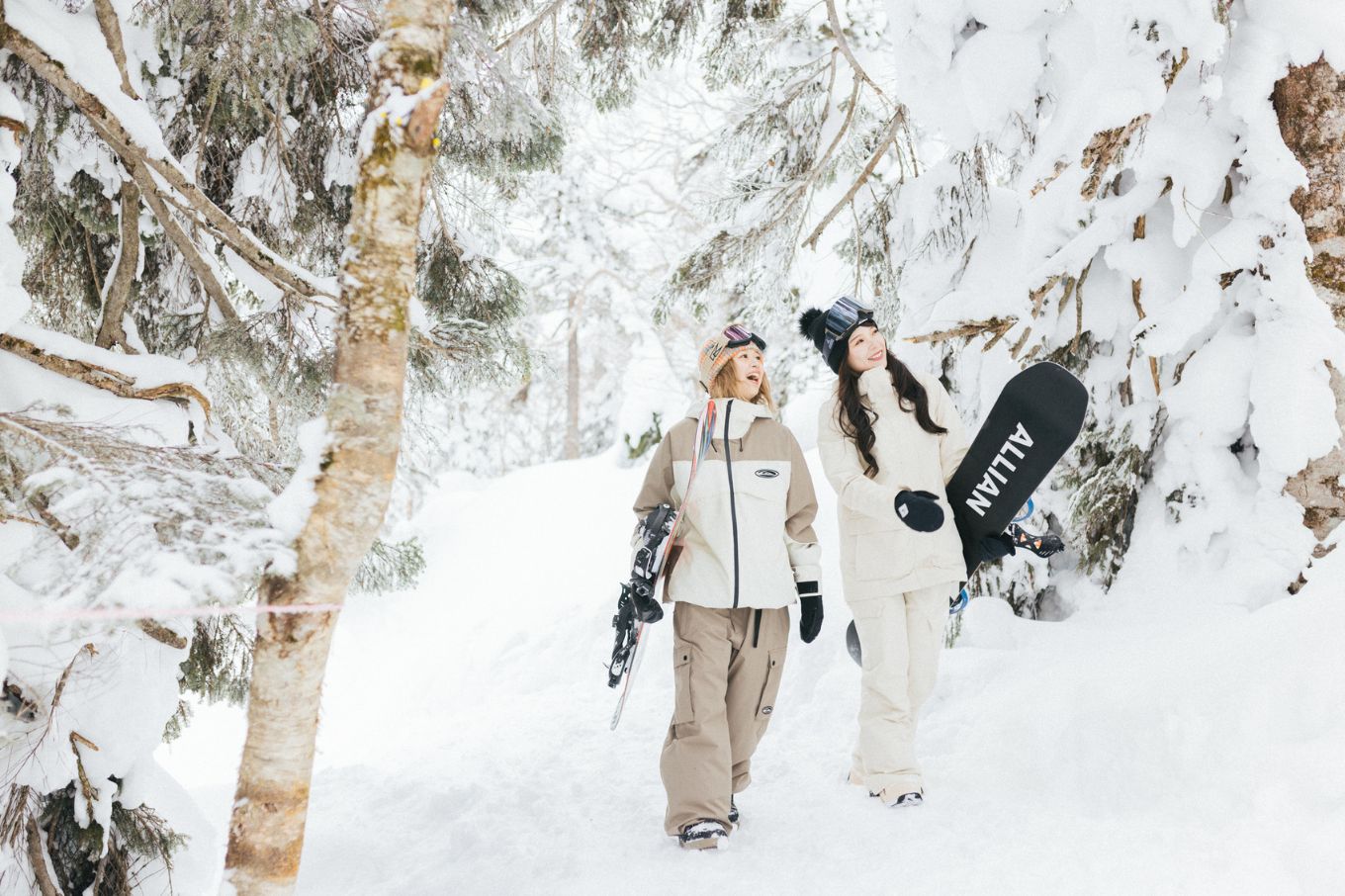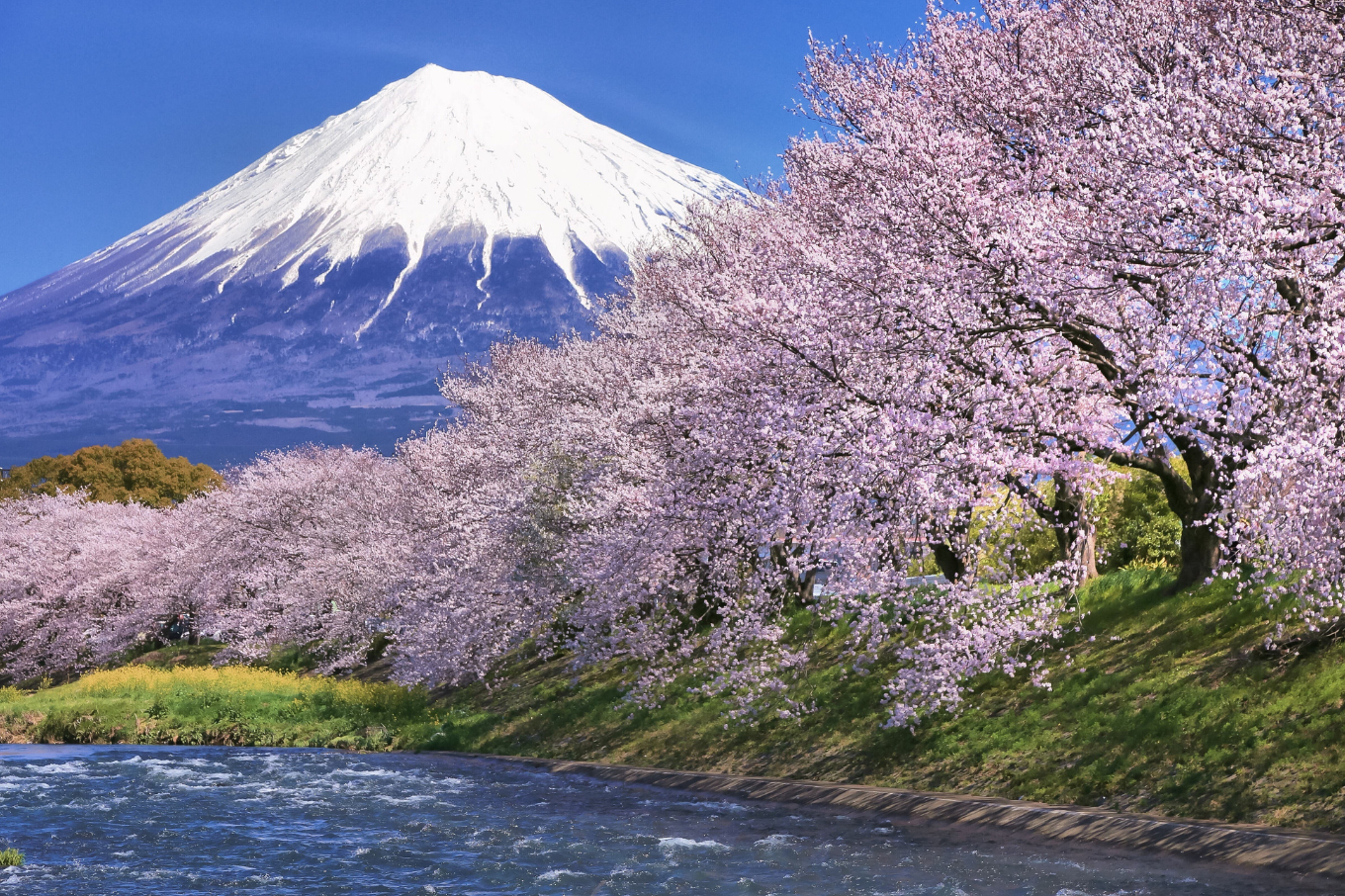Great Japan ski side trips? Wow, where to start!
We all need an occasional downday after all. Japan offers so many great experiences either close to or on the way to the main ski areas that you are totally spoilt for choice.
The Snow Monkeys at Jigokudani would likely be the #1 non-ski site anyone going anywhere near Nagano visits. They are fun, but apart from birds and bees monkey business, not exactly educational or cultural otherwise..
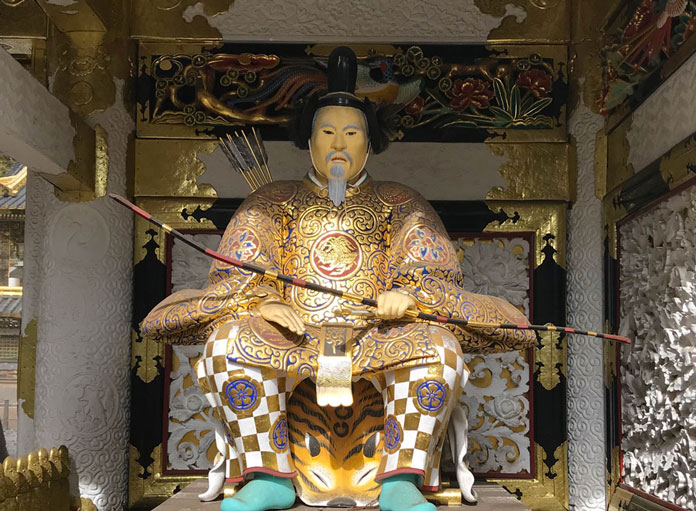
Unlike temples, which tick a bunch of culture, spiritual and historic boxes.
There are so many to choose from. Nagano’s Zenko-ji is pretty much a must, and super easy to check out – if you’ve got a couple of spare hours at Nagano station leave your bags and go have a look.
But for something more extensive we highly recommend Nikko’s amazing Toshogu Shrine World Heritage Site.
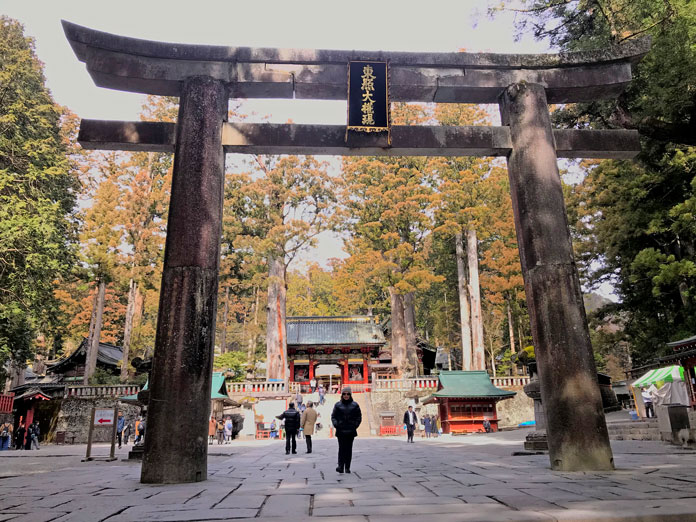
Nikko is not on anybody’s radar as a main snow destination, though it has some gorgeous wild mountains on the back side of the range from Gunma’s Oze-Iwakura. Check out our feature on off-grid Japan skiing for more on the skiing options here.
It is easy to visit en-route to or from anywhere north from Tokyo – like Aizu, Yamagata, Iwate or Aomori. Use a JR Tohoku Rail Pass to divert in and spend at least one night in the pretty little town at the foot of the mountains and base of the massive shrine complex built by the grandson of the first Shogun Tokugawa Ieyasu, to honour his legacy as the unifier of Japan.
For those who came in late, Ieyasu was the Samurai lord hero who finally united the warring country at the start of the 16th Century. In death he was honored as a Shinto deity, Tosho Daigongen.
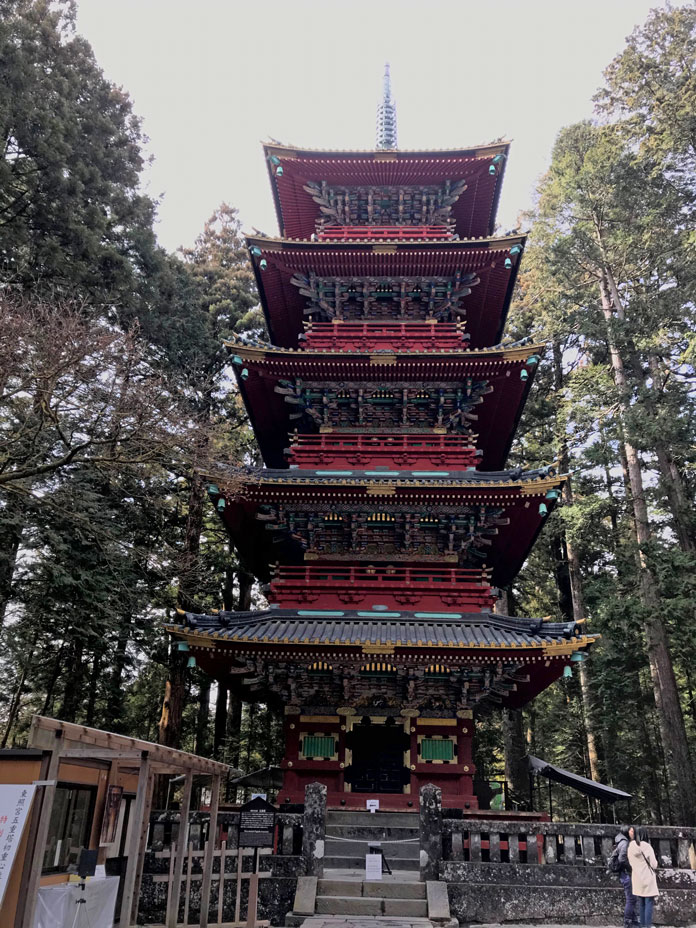
Toshogu Shrine just keeps unveiling wow-factor surprises that get better the further you go into the magnificent complex of 55 buildings set in beautiful old sugi (Japanese cedar) forest winding up the slopes of a hill behind Nikko town.
Paths and stairways follow the natural contours of the hill to lead you ever onwards and upwards, a design to increase the solemnity and depth of the feelings experienced by pilgrims 400 years ago that continues to inspire visitors today.
Most of these buildings are now either designated as Japanese National Treasures or Important Cultural Properties.
On top, after a final climb of 207 stone stairs each made from a single large stone cut to shape, is the final resting place of Ieyasu.
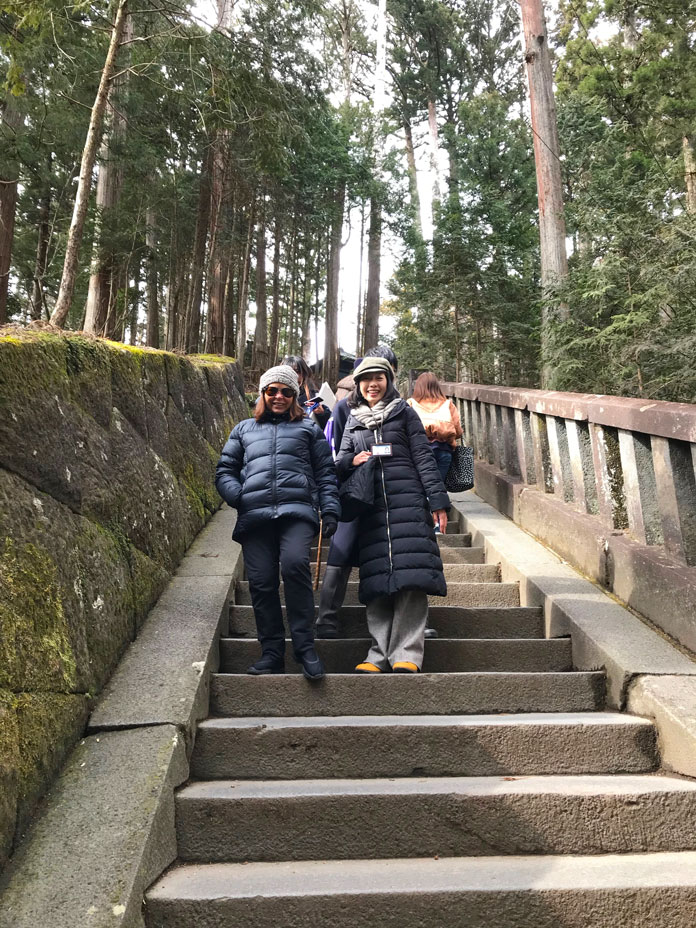
Samurai history at it’s best. And a glimpse of World History seeing the gifts presented to the shrine by foreign powers like the Dutch candelabra.
This is a fantastic experience on many levels. If you think you’ve already seen a temple or two, rest assured not much else in all Japan compares to the variety here.
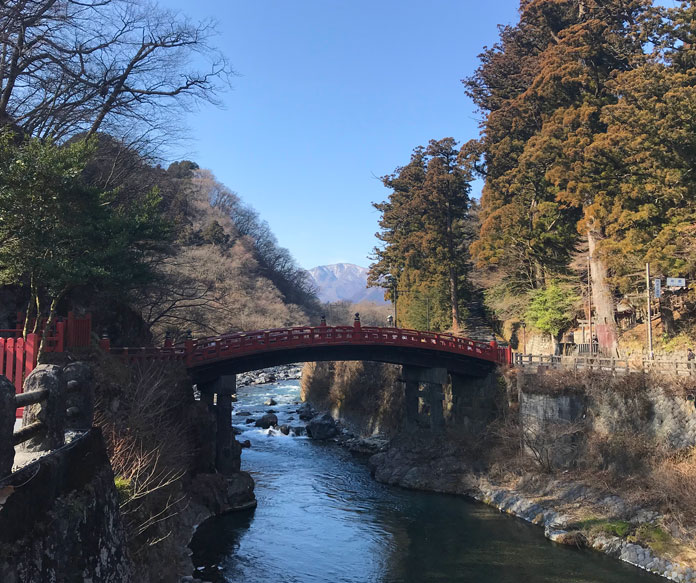
Heading up from town, the first key site is the Shinkyo (Sacred Bridge) over the swift crystal clear waters of the Daiya River, which has stood here since 1636.
The road winds on up to Nikkosan Rinno-ji Temple, which dates back over 1,200 years to the first temple on the site. The site was first developed in the 8th century, growing from humble beginnings to become one of the most important religious sites in the country. It’s a classic example of the uniquely Japanese fusion of Shinto and Buddhist traditions called shinbutsu shugo. So inside the main Sanbutsudo Hall, the biggest wooden structure in Nikko, are enshrined the Buddhist manifestations of Nikko’s three sacred Shinto mountain gods (kami) for Mt Nantai, Mt Nyoho and Mt Taro.
Rinnoji is impressive. Then you stroll on, up an avenue lined with majestic old trees, to the Ishidorii (Stone Torii Gate). Dating back to 1618, the 9m high gate features 1.2m diameter uprights. The massive stones for the gate were transported by ship all the way from Kyushu to Koyama, then manually hauled overland to Nikko.
The whole project is calculated from historical records to have cost the equivalent ¥40 billion in today’s values
It was largely completed within 17 months from 1636. An army of carpenters, stonemasons, other craftsman and labourers were employed.
Past the mighty gate a succession of wow-factor structures and features start to appear.
On your left, the Gojunoto Pagoda is a classic 5 storey pagoda. The construction features a centre pillar that is hung from the 4th floor, so it’s not load bearing and allows it to absorb earthquakes. It was destroyed by fire in 1815, but rebuilt 3 years later.
Continuing on you pass the Omotemon (Front Gate) and the Sanjinko (Three Sacred Storehouses), and another impressive Torii.
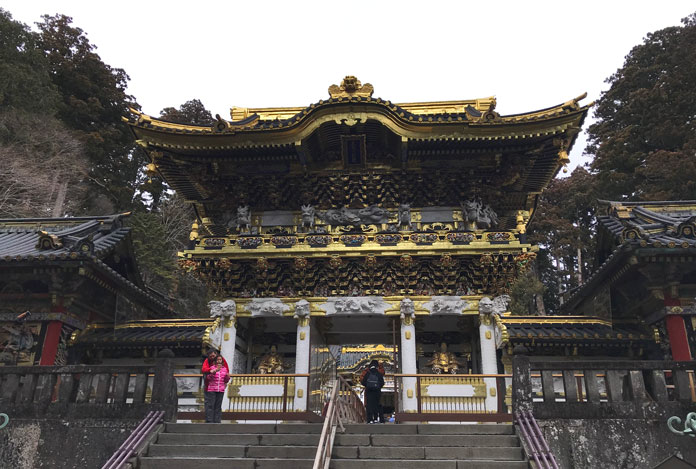
The Yomeimon Gate is hands down one of the most beautiful temple/shrine gates in Japan. The detail and beauty on show is an incredible expression of the skills of the craftsman in the early Edo period. It’s nickname “Higurashi-no-mon” means you will never tire of looking at it all day, but with constant streams of visitors you won’t get to test that anymore.
The Yomeimon gate guardians are impressive too: I’m sure this guy blinked at me when I got close to take the picture below. I flinched like he was going to reach for his bow. Not bad to be still scaring intruders after nearly 400 years on the job!
Through the Yomeimon Gate you encounter another series of wow-factor fascinations, some in the detail of the stories told in the carvings. Like the “See no evil, speak no evil, hear no evil” monkey frieze on the Shinkyusha (Sacred Stable).
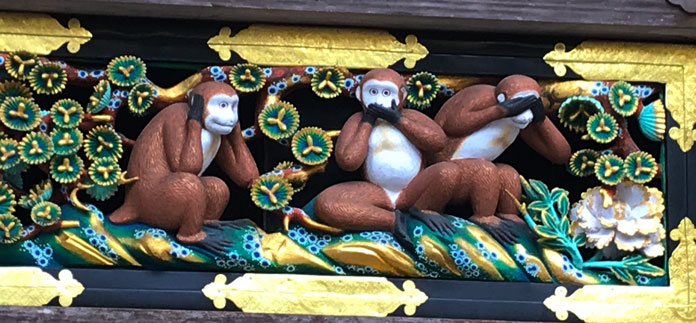
You can purify body and mind from the spring water at the Mizuya (water purification building. Rinse hands and mouth here ladling from the solid granite basin, from and dedicated by the feudal lord of Kyushu-Saga, Nabeshima Katsushige. Traditionally and today this is done before worshipping the deity in any shrine.
Past the Yomeimon Gate you come to the most sumptous gate of all, the Karamon (Chinese) Gate that was off limits to all but the Shogun’s retainers, and feudal lords deemed worthy of an audience. Now fully restored, it’s colours and gold leaf are stunning today, and must have inspired awe in visitors.
Certainly the early European traders were impressed by the Shogun’s power, and keen to cultivate his favour. As the whole complex is full of dedications from other Japanese feudal lords, it’s also home to some expensive foreign dedications like the Dutch Candelabra, a fantastic structure also known as the Revolving Lantern, whose massive lantern would spin when lit, driven by the hot air created within it. It was dedicated back in 1636, a very expensive present from the Dutch government.
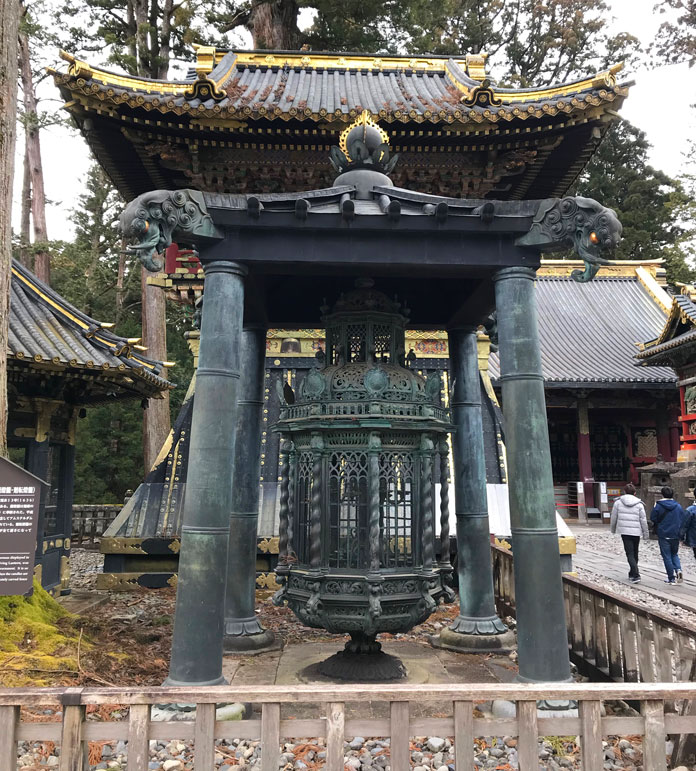
Toshogu’s lanterns are a feature – there are 121 of them at Nikko Toshogu Shrine, of which 101 are stone, 17 copper, and two fabulously expensive imported European iron. The lanterns beneath the Yomeimon Gate were dedicated by Ieyasu’s supporters at the decisive battle of Sekigahara in 1601, while those in the outer court came from the losing lords.
Ascending the final 207 stone stairs you reach the more ascetic inner shrine and final resting place.
The Inumikon Gate behind the Worship Hall guards the grave, built in 1650 and cast as single piece of bronze.
Inside lies the Inner Shrine Pagoda, cast in an expensive alloy of gold, silver and copper in 1683, replacing the earlier succesive wooden and stone versions. Visitors can’t pass the Inumikon Gate or enter the shrine, but you can stroll around it after summiting the last steps and passing under the Torii Gate to the inner shrine, also cast from bronze.
The 207 steps are pretty steep, and a long enough hike to deter many visitors, so you may get some quiet moments to reflect on the whole Nikko Toshogu Shrine experience. Which is presumably what the builder, and it’s deified resident, would have wished.
From the shrine Ieyasu looks out in direct line due south through the Tori Gate to the road to his capital at Edo (Tokyo). This was planted with bordering trees for many miles to creat an avenue that is still in use today.
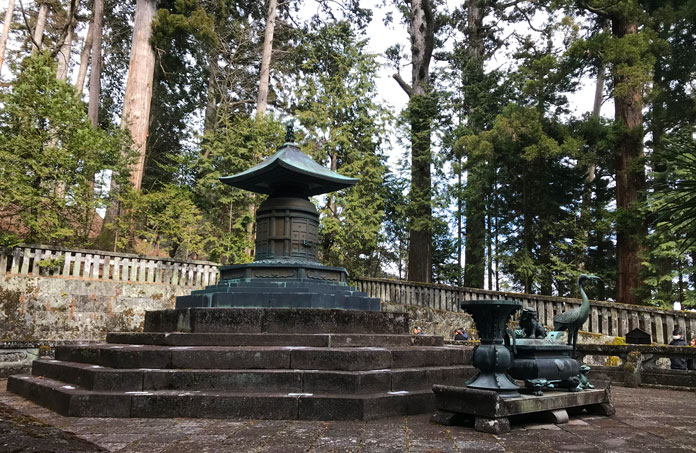
Access to Nikko
Nikko has 2 separate rail lines with their own stations – JR or the Tobu Line work equally well, and there’s not much difference timewise from Tokyo.
Tobu run the Limited Express Spacia service from Asakusa in Tokyo to Nikko in 2 hours. You can take the Asakusa line to/from Haneda Airport to connect to it (changing from the suburban station to the Asakusa Tobu terminus). We did this straight off an overnight flight, making Nikko our first, pre-ski stop.
The main Tobu Line (Nikko is a branch off it) continues on to Aizu so works well for more onsen and skiing there at the likes of Alts Bandai, Grandeco, Nekoma, Minowa etc.
You can get a 4 day Nikko Pass which includes all local trains and bus lines, and one non-express return trip from Tokyo, plus discount entry to Edo Wonderland, for ¥4,320 for adults, ¥1,060 children. There is plenty of accommodation in Nikko town too, so you could just stay here and do a culture day, a ski day, and an Edo Wonderland day for example. More details/book on Tobu site
With JR you can take the shinkansen to Utsunomiya, then the Nikko line. Blend it into one of our suggested JR East Tohoku Pass itineraries in that case.
Self driving to Nikko is easy, it’s only 160km, 2 hours or more depending on traffic. The World Heritage site gets busy.
The World Heritage site is easily accessed from town by the World Heritage Bus, or taxi, or about a 45 minute walk – it’s all uphill though, so easier to walk back down after.
More info on the Nikko tourism site here
When you’re in Nikko get more of a flavour for life in the Edo era by visiting nearby Edo Wonderland theme park village – a great experience for all ages, not just kids.
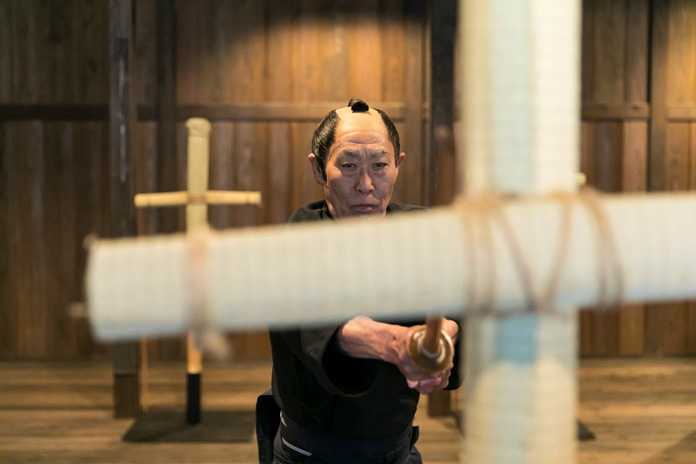
Nikko Accommodation Deals
Plenty of choice to suit any budget in and around Nikko. Staying in town is simplest, or head up into the beautiful Lake Chuzenji upland area with magnificent waterfalls and wilderness to enjoy there.
European embassies built summer escape retreats here in the late 19th century, and some luxury ryokans and hotels followed them.
For Nikko accommodation deals from booking.com just enter your target dates:


